#margaret suckley
Text

Picnic for Princess Juliana of the Netherlands at Val-kill, Hyde Park, New York
Collection FDR-Photos: Franklin D. Roosevelt Library Photographs Series: Photographs of Franklin D. Roosevelt
Original caption: Picnic for Princess Juliana of the Netherlands at Val-kill, Hyde Park, New York, October 9, 1943. L-R: Secret Service, Secret Service, Princess Irene, Princess Beatrix, Princess Juliana, Mrs. J.R. Roosevelt, Eleanor Roosevelt in background with unidentified man, FDR, children's nurse, Grace Tully, Ethel Roosevelt (Mrs. FDR, Jr.). Photo by Margaret Suckley.
Black and white photograph of people sitting and standing around several small tables set for a picnic. They are in a clearing surrounded by tall trees. To the left, two Secret Service men sit on a log while two young girls (Princesses Irene and Beatrix) play.
49 notes
·
View notes
Text
National Dog Day!
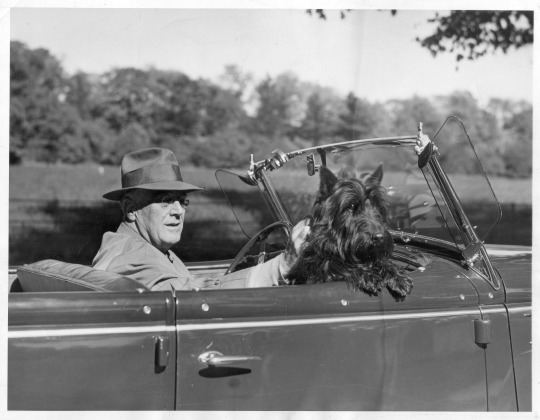
Happy National Dog Day!
Fala was born on April 7, 1940 and given to the President by Mrs. Augustus G. Kellogg of Westport, Connecticut, through Franklin Roosevelt's cousin, Margaret "Daisy" Suckley. At first his name was Big Boy. Franklin renamed him "Murray the Outlaw of Falahill" after a Scottish ancestor. His nickname became Fala. Fala went to live in the White House on November 10, 1940. Every morning Fala had a bone that was brought up on the President's breakfast tray. At night, he slept in a special chair at the foot of the President's bed.
Fala loved to travel with the President on long and short trips by train, car, or boat. In August 1941, Fala was at the Atlantic Charter Conference in Placentia Bay, Newfoundland with the President and Prime Minister Winston Churchill of England. In September of the following year and again in April 1943, Fala went on inspection trips of defense plants and visited the President of Mexico, President Camacho. Later that year in August and then again in September 1944 he accompanied President Roosevelt to the Quebec Conferences. In 1944, Fala was with the President on a sea trip to the Aleutian Islands. Read more about that story on our blog: https://fdr.blogs.archives.gov/2017/10/12/the-adventures-of-fala-first-dog-the-case-of-the-dog-who-didnt-bark-on-the-boat/
While in the White House, Fala was so popular that he received thousands of letters from people and animals from across the country. He had a secretary appointed to him to answer all his fan his mail.
In April of 1945, President Roosevelt died in Warm Springs, Georgia. Fala attended the funeral but seemed lost without his beloved master. He went to live with Mrs. Roosevelt at Val-Kill, where he spent his time running, playing and chasing squirrels and cats. On April 5, 1952, Fala passed away and was buried in the Rose Garden next to the sun dial not far from the graves of President and Mrs. Roosevelt on what would have been his twelfth birthday April 7, 1952.
Continue celebrating #NationalDogDay by exploring some of the Fala related artifacts on our Digital Artifact Collection: https://fdr.artifacts.archives.gov/search/fala
📷: NPx 52-118 - October 22, 1944, Franklin D. Roosevelt with Fala in car at Hyde Park, New York. (UPI photo)
27 notes
·
View notes
Text
Margaret “Daisy” Suckley
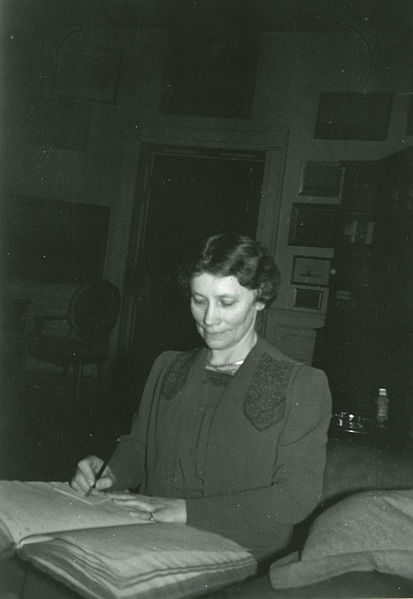
President Roosevelt himself took this photograph of Daisy Suckley in the White House as she went through various papers, February 10, 1942. (Photo: FDR Presidential Library & Museum)
This post was written by Keith Muchowski, an Instruction/Reference Librarian at New York City College of Technology (CUNY) in Brooklyn, New York. He blogs at thestrawfoot.com.
Margaret Suckley was an archivist at the Franklin D. Roosevelt Presidential Library in Hyde Park, New York from 1941 to 1963. But she was much more than that.
“Daisy” Suckley, as she was known to friends and family, was born in Rhinebeck, New York in 1891 and grew up on Wilderstein, the family estate on the Hudson River not far from the Roosevelts’ own Springwood in Hyde Park. This was a small, rarefied world and in the ensuing decades Daisy saw sixth cousin Franklin’s rise to prominence. She eventually became one of his closest friends and confidants, sharing the good times and the bad with the country’s only four-term president. Ms. Suckley was there for Franklin in the 1920s when he was struck paralyzed from the waist down with polio, knew him during his years in Albany when he was New York governor and he became a national figure, attended the presidential inaugural in 1933 in the depths of the Great Depression, offered a discreet and comforting ear during the dark days of the Second World War when, as commander-in-chief, he made difficult and lonely decisions affecting the lives of millions around the world. Finally, Daisy was one of the inner circle present in Warm Springs, Georgia when the president died in April 1945. Roosevelt was inscrutable to most—some called him The Sphinx—but if anyone outside his immediate family knew him, it was Margaret “Daisy” Suckley.

Ms. Suckley (left) in Roosevelt's private office at the presidential library with actress Evelyn Keyes, and Library Director Fred Shipman. Ms. Keyes is holding the album-version of Ms. Suckley's book The True Story of Fala, October 31, 1946. (Photo: FDR Presidential Library & Museum)
There were perks to being Roosevelt’s close friend. The two enjoyed picnics and country drives. Both loved to dish the gossip about Washington politicos and the Hudson River Valley families they had known for decades. Daisy helped President Roosevelt design his Hyde Park retreat, Top Cottage. She enjoyed the “Children’s Hour” afternoon breaks when Roosevelt would mix cocktails for himself and his friends to unwind. There were getaways at Shangri-La, the rustic presidential retreat in Maryland’s Catoctin Mountains known today as Camp David. She attended services at Hyde Park Church with the First Family, King George VI and Queen Elizabeth when the royals visited in 1939. It was she who gave him Fala, the Scottish Terrier to whom he was so attached after receiving the pooch as a Christmas gift in 1941.
President Franklin Delano Roosevelt stood at a podium on the grounds of his family home in Hyde Park and dedicated the Franklin D. Roosevelt Presidential Library on June 30, 1941. He was still in office at the time, having won re-election to an unprecedented third (and eventually fourth) term seven months previously. Roosevelt clearly believed that libraries and archives were themselves exercises in democracy in these years when fascism was spreading around the world. Ever the optimist even as World War Two raged in Europe and the Pacific, Roosevelt declared “It seems to me that the dedication of a library is in itself an act of faith. To bring together the records of the past and to house them in buildings where they will be preserved for the use of men and women in the future, a Nation must believe in three things. It must believe in the past. It must believe in the future. It must, above all, believe in the capacity of its own people so to learn from the past that they can gain in judgment in creating their own future.” Then he quipped to the two thousand gathered about this being their one chance to see the place for free.
Roosevelt had been an unrepentant collector since his earliest boyhood days, with wide-ranging interests especially in naval history, models ships, taxidermy, philately, books on local history, political ephemera, and—probably above all—anything related to the Roosevelt clan itself. His eight-years-and-counting administration had already produced reams of material via the myriad alphabet soup New Deal agencies that had put millions of Americans to work during the Great Depression. It was becoming increasingly obvious in that Summer of 1941 that the United States would likely become entangled in the Second World War; as Roosevelt well understood, that would mean even more documents for the historical record.
Presidential repositories of various incarnations were not entirely new. George Washington had taken his papers with him back to Mount Vernon after his administration for organization. Rutherford B. Hayes, Herbert Hoover, and even Warren G. Harding had versions of them. Nora E. Cordingley (featured in a March 2018 Women of Library History post) was a librarian at Roosevelt House, essentially a de facto presidential library opened in 1923 at Theodore Roosevelt’s birthplace on Manhattan’s East 20th Street whose papers and other materials eventually moved to Harvard University’s Houghton and Widener Libraries. What was new about Franklin Roosevelt’s creation was its codification of what is today’s presidential library system. Roosevelt convened a committee of professional historians for advice and consultation, raised the private funds necessary to build the library and museum, urged Congress to pass the enabling legislation, involved leading archive and library authorities, and ultimately deeded the site to the American people via the National Archives, which itself he had signed into being in 1934.
The academic advisors, archivists, and library professionals at the Franklin D. Roosevelt Library were all important, indeed crucial, to the professionalization and growth of both the Roosevelt site and what would become the National Archives and Records Administration’s Office of Presidential Libraries. However, Roosevelt understood in those early that he also needed someone within his museum and library who knew him deeply and understood the nuances of his life and long career. That is why he turned to Ms. Suckley, securing her a position as junior archivist in September 1941 just months after the opening. The library was very much a working place for the president, who kept an office there, where—unbeknownst to museum-goers on the other side of the wall—he might be going through papers with Daisy, entertaining dignitaries while she looked on, or even making decisions of consequence to the war. Ms. Suckley worked conscientiously, even lovingly, in the presidential library, going through boxes of photographs and identifying individuals, providing dates and place names that only she would know, filling in gaps in the historical record, sorting papers, and serving in ways only an intimate could. The work only expanded after President Roosevelt died and associates like Felix Frankfurter and others donated all or some of their own papers. The work also became more institutionalized and codified. Other Roosevelt aides took on increasingly important roles after the president’s death in 1945. More series of papers became available to scholars in the 1950s and 60s as the Roosevelt Era receded from current events into history. Through it all Daisy Suckley continued on for nearly two more decades until her retirement in 1963.
Margaret “Daisy” Suckley lived for twenty-eight more years after her retirement, turning her attention to the preservation of her ancestral home there on the Hudson but never forgetting Franklin. In those later years when reporters, historians, and the just plain curious curious showed up at Wilderstein and inevitably asked if there was any more to tell about her friendship with Franklin Roosevelt she always gave a wry smile and demure “No, of course there isn’t.” After her death at the age of ninety-nine in June 1991 however a trove of letters and diaries was found in an old suitcase hidden under her bed there at Wilderstein. A leading Roosevelt scholar edited and published a significant portion of the journals and correspondence in 1995 to great public interest. While it is still unclear if there was every any romantic involvement between Franklin and Daisy—as some have speculated for decades—the letters do provide a deeper, more nuanced portrayal of their relationship and show just how close the two were. Franklin Delano Roosevelt may have been The Sphinx to many, hiding his feelings behind a veneer of affability and bonhomie. To his old neighbor, distant cousin, discreet friend, loyal aid, and steadfast curator Margaret Suckley, he showed the truer, more vulnerable side of himself.
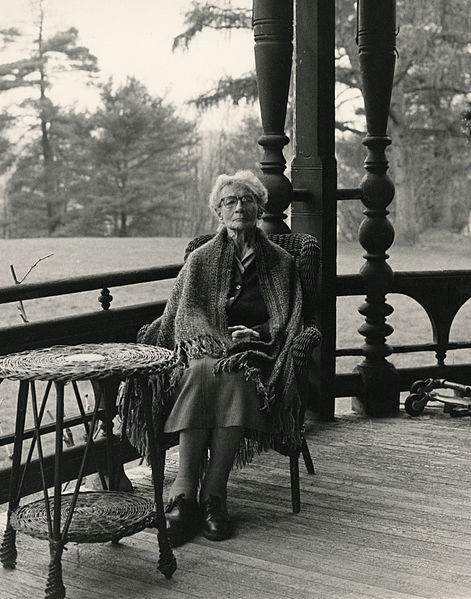
Ms. Suckley later in life at Wilderstein, 1988. (Photo: FDR Presidential Library & Museum)
Further reading:
Hufbauer, Benjamin. “The Roosevelt Presidential Library: A Shift in Commemoration.” American Studies, vol. 42, no. 3, Fall 2001, pp. 173–193.
Koch, Cynthia M. and Lynn A. Bassanese. “Roosevelt and His Library, Parts 1 & 2.” Prologue: Quarterly of the National Archives and Records Administration, vol. 33, no. 2, Summer 2001, Web.
McCoy, Donald R. "The Beginnings of the Franklin D. Roosevelt Library," Prologue: The Journal of the National Archives, vol. 7, no. 3, Fall 1975, pp. 137-150.
Persico, Joseph E. Franklin & Lucy: President Roosevelt, Mrs. Rutherford, and the Other Remarkable Women in His Life. Random House, 2008.
Ward, Geoffrey C. Closest Companion: The Unknown Story of the Intimate Friendship between Franklin Roosevelt and Margaret Suckley. Houghton Mifflin, 1995.
#women's history#library history#tumblarians#daisy suckley#fdr#margaret suckley#archivists#presidential collections#new york history#fdr presidential library#women of library history
12 notes
·
View notes
Link
One of Franklin Delano Roosevelt's numerous rumored affairs will be revisited in the coming weeks with the release of 'Hyde Park on Hudson,' a film depicting the American president's quasi-incestual affair with his distant cousin, Margaret 'Daisy' Suckley.
The film, opening December 7, stars Bill Murray as Roosevelt and Laura Linney as Miss Suckley.
It takes place during the June 1939 weekend that the British king and queen visited Roosevelt at his upstate New York cottage in Hyde Park, where FDR was said to take a number of mistresses.
3 notes
·
View notes
Text
All American Tales
After Franklin Roosevelt died on April 12, 1945 in Warm Springs, Georgia of a cerebral hemorrhage, his cousin, Margaret “Daisy” Suckley who was there, took it upon herself to take Fala, FDR’s beloved Scottish Terrier, home with her assuming Eleanor, his absent Missus, wouldn’t want him.
Yes, Fala was a he, named after Murray the Outlaw of Falahill, a famous Scottish ancestor.
Well, Mrs. R. indeed…
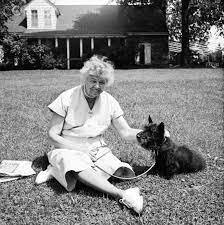
View On WordPress
#Franklin and Eleanor Roosevelt#The Kennedy Years#Theodore Roosevelt White House Years#White House Pets
1 note
·
View note
Photo

“Wilderstein is a not-for-profit house museum in Rhinebeck, NY. It was the home of Margaret Suckley, a cousin and confidante of Franklin Roosevelt, and is widely regarded as the Hudson Valley’s most important example of Victorian architecture.” - http://wilderstein.org (at Wilderstein Historic Site) https://www.instagram.com/p/CPDloaCrp6V/?utm_medium=tumblr
0 notes
Text
Hyde Park on Hudson
The story of the love affair between FDR and his distant cousin Margaret “Daisy” Suckley, centered around the weekend in 1939 when the King and Queen of the United Kingdom visited upstate New York.
Trailer film Hyde Park on Hudson
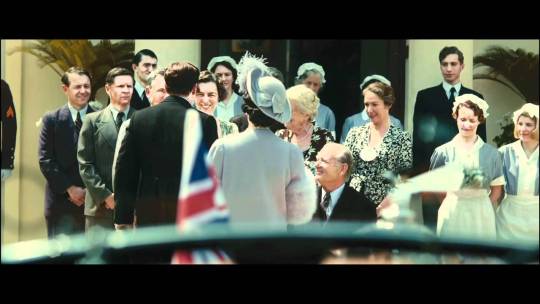
The post Hyde Park on Hudson appeared first on Phim HD online - Kênh xem phim HD online tổng hợp miễn phí trực tuyến.
source https://phimhdonlinez.com/hyde-park-on-hudson/
0 notes
Text
Hunter College Receives Donation of Historic Franklin Delano Roosevelt Correspondence
Hunter College Receives Donation of Historic Franklin Delano Roosevelt Correspondence
Letters between FDR and Daisy Suckley
Will Be on Display for Three Weeks at Roosevelt House
May 8-May 31, 2019
(New York, NY, May 8, 2019) Hunter College announced today its receipt of an invaluable donation of historic correspondence—15 original, handwritten letters from Franklin Delano Roosevelt to his close friend and distant cousin Margaret (Daisy) Suckley that have never before been publicly…
View On WordPress
0 notes
Text
Hyde Park on Hudson
In 1930s Hudson Valley, Margaret “Daisy” Suckley is reacquainted with her distant cousin, President Franklin D. Roosevelt, to help him relax at his family estate. That aid soon develops into much more as they become lovers. That puts Daisy in a unique position as Roosevelt receives the King and Queen of Britain in 1939 for a visit. As the Royal couple copes with the President’s oddly plebeian arrangements, Daisy learns that there is far more to Roosevelt’s life than she realized. With the world about to be set ablaze by war, friendships are struck and perspectives are gained on that special weekend that would make all the difference with a great, but very human, president.
Hyde Park on Hudson syndicated from http://ift.tt/2rLj3l6
0 notes
Text
FDR the Chair Collector
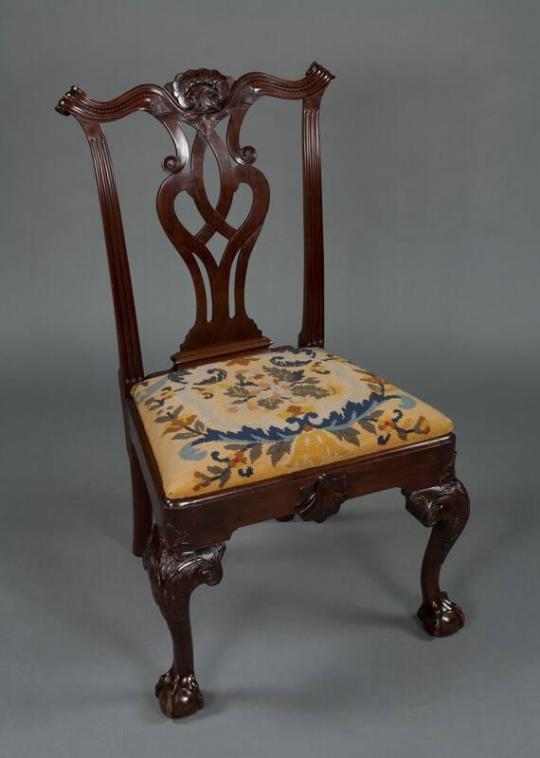
This Chippendale chair once belonged to Benjamin Chew, Chief Justice of the Supreme Court of the Province of Pennsylvania in the 18th century. The chair was lent to Franklin Roosevelt in 1941 by his distant cousin, Margaret L. Suckley, a Chew descendent, who later donated it to the Roosevelt Library. Suckley assisted the President with the furnishing of his Study.
Learn more about this chair on our Digital Artifact Collection: https://fdr.artifacts.archives.gov/objects/29677
Join us throughout 2023 as we present #FDRtheCollector, featuring artifacts personally collected, purchased, or retained by Franklin Roosevelt, all from our Digital Artifact Collection.

#fdr#franklin d. roosevelt#daisy suckley#Benjamin chew#american history#museum from home#artifact collection
8 notes
·
View notes
Photo

Margaret Suckley, known as Daisy, and Fala at Top Cottage during the summer of 1941. This photo was taken by President Franklin D. Roosevelt.
Credit: FDR Presidential Library & Museum
16 notes
·
View notes
Text
Hyde Park on Hudson
The story of the love affair between FDR and his distant cousin Margaret “Daisy” Suckley, centered around the weekend in 1939 when the King and Queen of the United Kingdom visited upstate New York.
Trailer film Hyde Park on Hudson
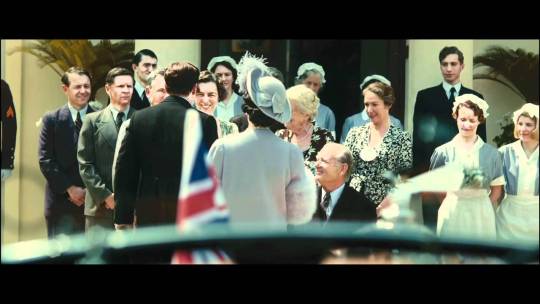
The post Hyde Park on Hudson appeared first on Phim HD online - Kênh xem phim HD online tổng hợp miễn phí trực tuyến.
source https://phimhdonline.tv/hyde-park-on-hudson/
0 notes